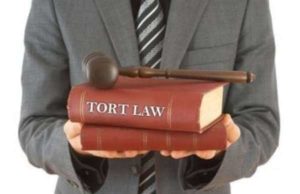
Insurance Explained
1. In both law and economics, insurance is a crucial and fundamental form of risk management that is primarily used as a hedge against the risk, attached to unexpected damages or losses.
2. Insurance is typically defined as the equitable transfer of the attached risk of a loss, from one entity to another. This transfer is affirmed following the exchange of a payment. An insurer is defined as a company who sells insurance, while the insured party or policy holder is the individual or entity that purchases the insurance policy.
3. The insurance product is purchased using an insurance rate, which is a factor that determines the amount to be charged for a particular amount of coverage. The transaction will involve the purchasing party to deliver a payment to the insurer in exchange for the insurer’s pledge to compensate the purchasing party in the case of a financial loss. The purchasing party receives a contract (the insurance policy), which will detail the circumstances and conditions under which the purchasing party will be compensated.
Insurance Companies
1. A life insurance company sells annuities, pension products, and life insurance, whereas a non-life insurance company offers general policies to provide coverage against losses realized to consumer products or services.
2. Insurance a protective policywhich operates as a form of risk management for consumers and companies.
3. Insurance products offer an equitable transfer of the risk from one entity to another in exchange for a tangible payment.
4. As a result of the characteristics associated with this transaction, the insurer will sell insurance policy to the insured individual at a premium. The entity that purchases the policy will be protected from damages or a loss attached to the underlying product or resource. All insurance companies provide policies to obtain a profit.
5. The premiums attached to the policies and the rates of payment are aligned with an evaluation of risk for the underlying company or individual seeking insurance.
Principles
1. An insurance company may offer an insurance policy for seemingly any consumer product or business service. Houses, property, credit, automobiles, boats, medical care, a person’s life, and various consumer products are typically attached with some form of insurance policy.
2. Insurance companies provide these policies to a consumer base or business entity by pooling funds from multiple insured entities to pay for the losses that may be realized.
3. The insured entities (those individuals or business that purchase an insurance policy) are protected against risk for a fee charged by the insurance company.
4. All insurance companies will evaluate prospective businesses and individuals to ascertain which goods or entities are in fact insurable. An insurance company will adjust the rates depending on the likelihood that the individual or the good attached will incur costs to the insurance company.
5. All private insurance companies incorporate a model which prices seven potential types of risks: accidental losses, large losses, calculable losses, a definite loss, large number of similar exposure units, an affordable premium, and a limited risk of catastrophically large losses.
Legal Issues
1. When insurance is offered to an entity, there are legal requirements aligned with the policy and the transaction of the product.
2. The following list contains examples of basic legal issues that affect an insurance company’s business model:
3. Indemnity: The insurance company will compensate the insured entity in the case of certain losses only up to the insured interest.
4. Utmost Good Faith: The insurance company and the insured entity are tied together through a contractual agreement that revolves around good faith–the contract must be honored with honesty and fairness and all material facts must be disclosed in the agreement.
5. Insurable Interest: The insured entity must directly suffer from the loss to realize coverage. The policy holder must possess a “stake” in the damages suffered or the monetary loss of their insured good or service.




























